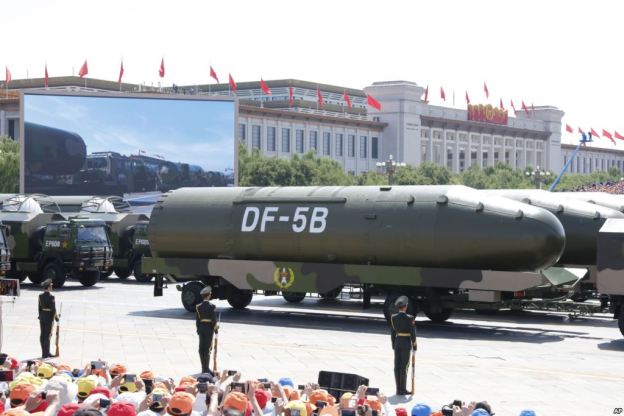As Yemen’s formal economy collapses, a war economy has taken its place. For a fee, any truck can pass checkpoints without inspection, no matter what it carries. Weapons-smuggling is rife; particularly, says a diplomat, of Saudi-supplied arms. So cheap and plentiful are hand-grenades that Yemenis throw them to celebrate weddings. Sheikhs offer their tribesmen as fighters for neighbouring countries willing to pay for regional influence….
Outsiders have added greatly to the fragmentation of Yemen. Iran has long backed the Houthis with weapons, but ideas are just as lethal an export…Saudi Arabia countered by exporting its own Wahhabi version of Sunni Islam. Radical preachers, such as Muqbil al-Waddai, opened retreats in the desert, where at prayer-time trainees bowed down to Kalashnikovs laid in front of them. With Sunnis concentrated on the coast and in the east, and Shias predominating in the highlands of the north-west, their rival creeds prised the country apart.
Such are the animosities that Yemen, stitched together in 1990, is now disintegrating. The south seethes at the northern bullies who bombarded their roads and sniped at their citizens when they briefly conquered Aden in the early months of the war. The north decries the southern traitors who invited Saudi and Emirati forces to drop bombs on them and isolate them by land, air and sea after the outsiders joined the war in March 2015…
Reluctant to take risks, Saudi pilots fly high, out of range of anti-aircraft fire. That spares Saudi lives, but imprecise bombing increases Yemeni civilian casualties. The UN says over 7,000 Yemenis have been killed in the two years of war. Hospitals were attacked 18 times in 2016.
Hunger is also taking a toll. Yemen imports 90% of its food, so the warring parties control its supply as yet another weapon. Without electricity to keep it cool, much of what gets through perishes. Of some 27m Yemenis, 7m are going hungry, says the UN, almost double the figure in January. Some 3m people have fled their homes, but of Yemen’s neighbours, only Djibouti accepts refugees. Yemen, says the UN, is the world’s largest humanitarian crisis.
Saudi Arabia insists all this is a price worth paying for reinstating the president the Houthis chased out of the capital in 2015…Vowing to push Iran back, the new Saudi king’s impulsive son and defence minister, Muhammad bin Salman, saw a chance to prove his mettle.
But even if the diagnosis was accurate, the prince’s response has been fatally flawed. War has only exacerbated the manageable threat that Saudi Arabia faced at the start. No matter how often its loyal press report victorious advances, the front lines have in fact changed very little. But Saudi Arabia now looks more vulnerable and Iran looms larger than ever. The Houthis mount regular raids dozens of kilometres into Saudi Arabia, often unopposed. Missiles land as far north as Riyadh, most recently striking an airbase there on March 18th, and disable coalition naval vessels in the Red Sea. Scores of Saudi and UAE tanks have been struck. As always, al-Qaeda and Islamic State fill the copious ungoverned spaces, perhaps offering a refuge for fighters fleeing Iraq and Syria. As a war it predicted would quickly end enters its third year, Saudi Arabia seems without an exit strategy. “Yemen [is] in danger of fracturing beyond the point of no return,” said a recent UN report.
“All permanent members of the UN Security Council are against the war, but they are all ready to sell Yemen for arms,” says an ex-UN official who worked on Yemen. By night Saudi Arabia launches American-made Reaper combat drones from an American base in Djibouti. In order to buy silence, King Salman promised China $65bn of investment on a visit this month….
Beggar thy neighbourYemen’s war enters its third bloody year, Economist, Mar. 25, 2017


 A withering United Nations report on Yemen’s civil war provides fresh evidence about the extent to which Saudi Arabia and Iran have intervened in the conflict, pursuing their regional proxy war even as Yemen disintegrated into “warring statelets” that would be difficult to reunite. The U.N. panel said there were “strong indications of the supply of arms-related material manufactured in, or emanating from, the Islamic Republic of Iran,” in violation of a U.N. embargo on Yemen.
A withering United Nations report on Yemen’s civil war provides fresh evidence about the extent to which Saudi Arabia and Iran have intervened in the conflict, pursuing their regional proxy war even as Yemen disintegrated into “warring statelets” that would be difficult to reunite. The U.N. panel said there were “strong indications of the supply of arms-related material manufactured in, or emanating from, the Islamic Republic of Iran,” in violation of a U.N. embargo on Yemen.

